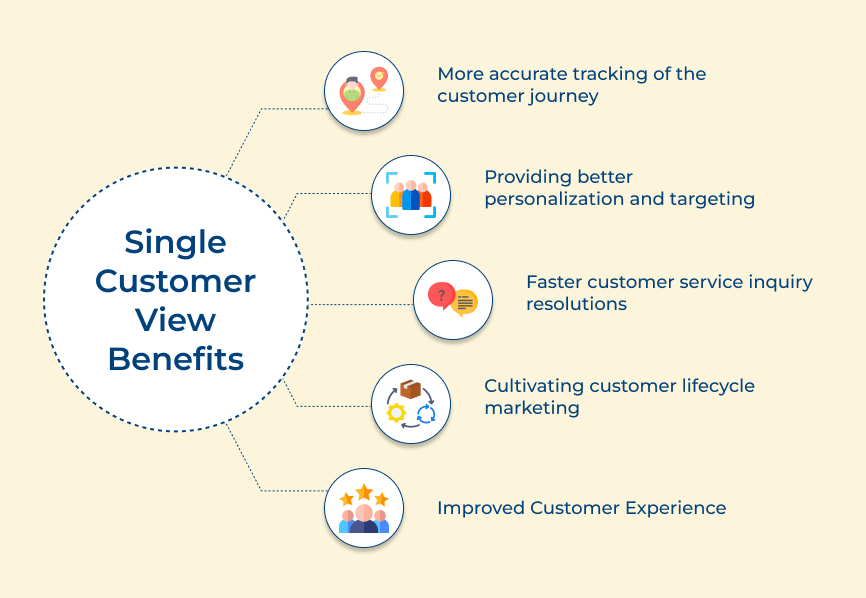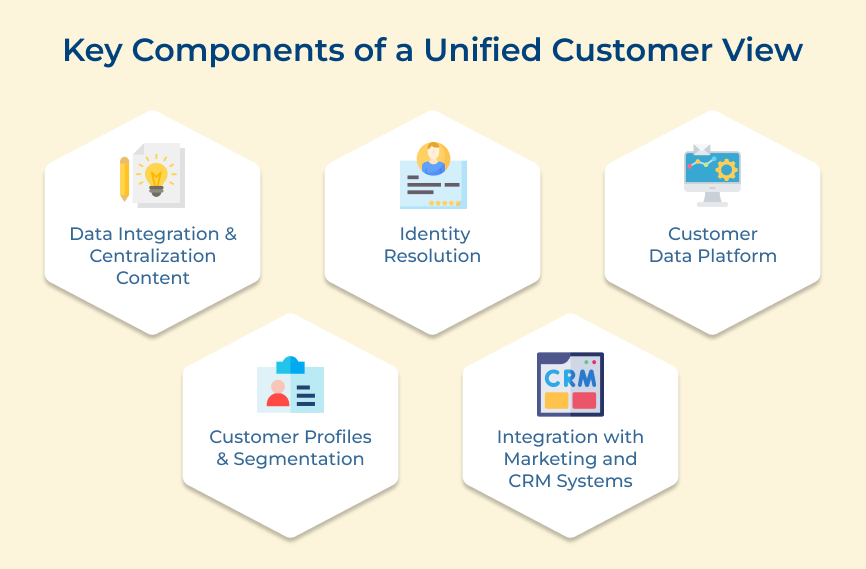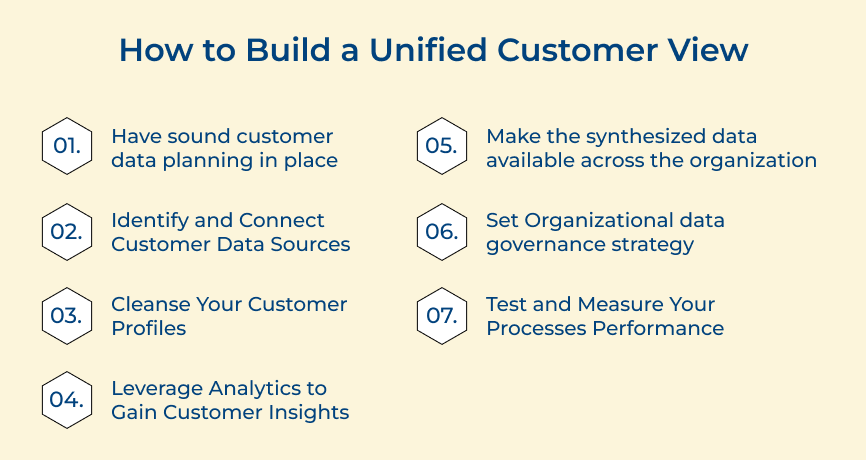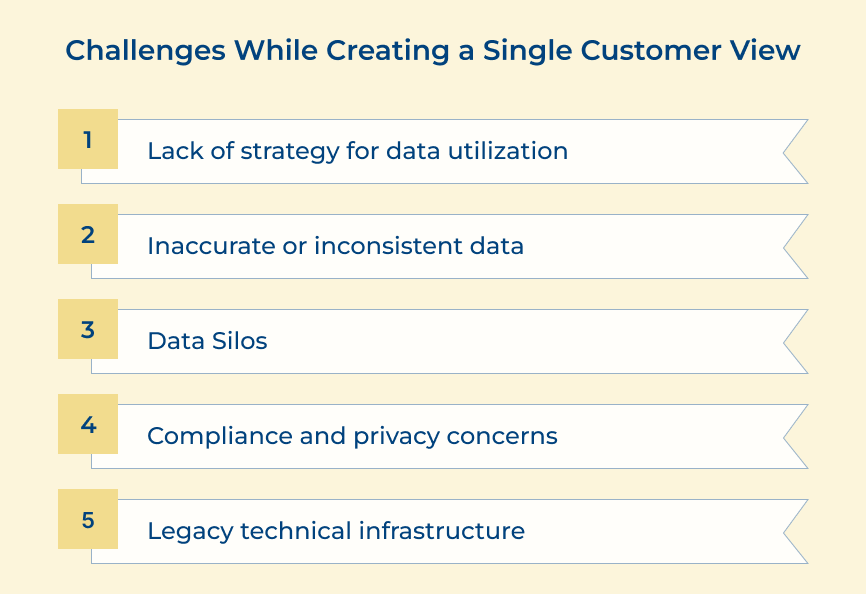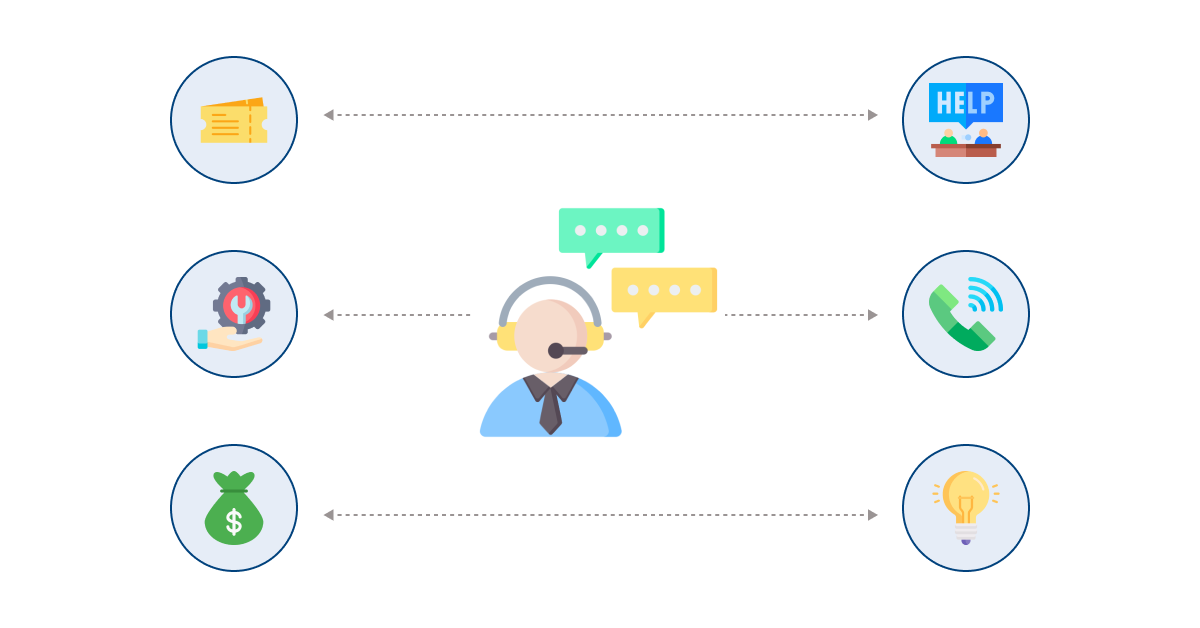Companies can build a single customer view that provides a holistic understanding of each individual. It allows you to create personalized experiences and targeted marketing campaigns. The approach ensures you don’t treat different customers in the same manner. Rather, you tailor your approach following the receptive customer.
Best Practices:
- Regularly audit the customer data to maintain data accuracy and ensure ongoing data cleansing efforts.
- Utilize data validation techniques to identify and rectify data inconsistencies.
- Implement data governance practices and establish clear processes to maintain a reliable customer database.
4. Leverage Analytics to Gain Customer Insights
Applying analytics to generate customer insights is a crucial step in building a single customer view. It allows businesses to have a comprehensive understanding of their customer’s behaviors, preferences and needs.
Leveraging data analytics helps companies to uncover patterns, trends and correlations within the customer data. It enables them to tailor their marketing strategies and improve customer experiences.
Best Practices:
- Utilize advanced analytics tools to process and analyze diverse data sets to uncover meaningful patterns related to customer behavior.
- Integrate data from different sources to create a centralized, comprehensive view of each customer, ensuring data quality and accuracy.
- Continuously monitor and update the single customer view by capturing real-time customer data.
- Adjust marketing strategies based on the evolving needs and preferences of customers.
5. Make the Synthesized Data Available Across the Organization
Making the synthesized data available across the organization is crucial for building a unified customer view. It enables different departments within the company to access and leverage the data, leading to a comprehensive understanding of customers. When data is inaccessible, it hinders collaboration and prevents the business from harnessing the full potential of customer insights.
Start by establishing a centralized data repository where all the synthesized data can be stored and accessed. It ensures that everyone in the organization has a single source of truth, eliminating discrepancies and promoting consistency in customer information.
Best Practices:
- Implement a robust data management platform or customer data platform to centralize and organize the synthesized data effectively.
- Establish data integration processes to seamlessly connect various data sources, ensuring a complete and accurate customer view.
- Enforce data governance policies to maintain data quality, privacy, and compliance, protecting customer information while making it accessible across the organization.
6. Set Organizational Data Governance Strategy
Setting an organizational data governance strategy is essential for building a single customer view. Just 3% of the data in a business enterprise meets quality standards. It involves establishing policies, processes and controls to protect customer data across the entire organization.
A robust data governance strategy ensures that data is collected, stored, and used in a compliant manner, allowing businesses to gain a comprehensive understanding of their customers.
Best Practices:
- Assigning ownership for data management ensures that individuals or teams are responsible for maintaining data integrity, quality and security.
- Implementing well-defined policies and procedures helps standardize data management practices, ensuring consistency in data across the organization.
- Enable data integration and centralization to create a 360-degree view of their customers, leading to more personalized marketing campaigns.
7. Test and Measure Your Processes Performance
Testing and measuring the performance of processes is crucial. It is done by testing different strategies across your sales, marketing, and support conversations to identify what works best for your customers. The valuable insights are then used to refine your approach.
You can gain insights into customer behavior, preferences and interactions across different touchpoints to create a unified view of each customer. The approach enables you to deliver targeted experiences that drive engagement, loyalty, and business growth.
Best Practices:
- Define clear key performance indicators (KPIs) for the processes to measure their performance accurately and align them with your overall business goals.
- Implement regular testing protocols to identify any issues or inconsistencies in data collection, ensuring data accuracy and quality.
- Continuously analyze the results of your tests and measurements to gain insights. They enable companies to drive improvements in their processes and enhance the single customer view.
Top Challenges While Creating a Single Customer View (SCV)
Let us go through the top challenges that businesses face while creating a unified customer profile.






